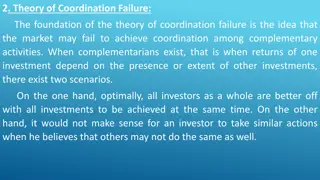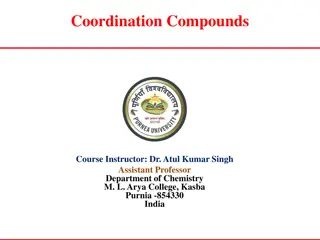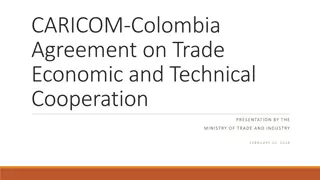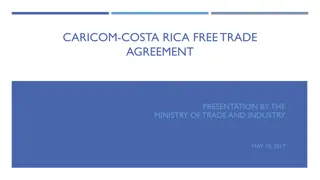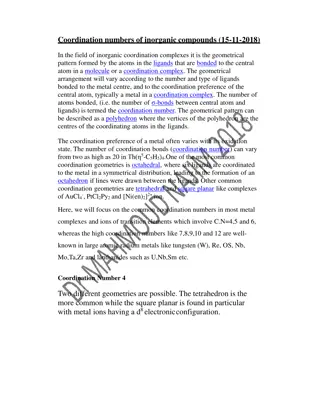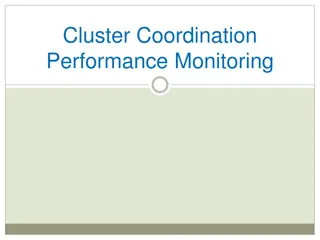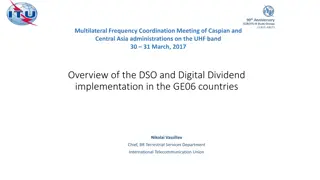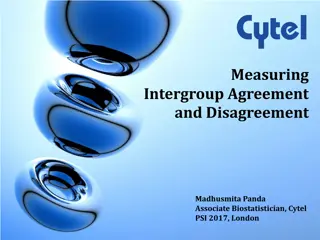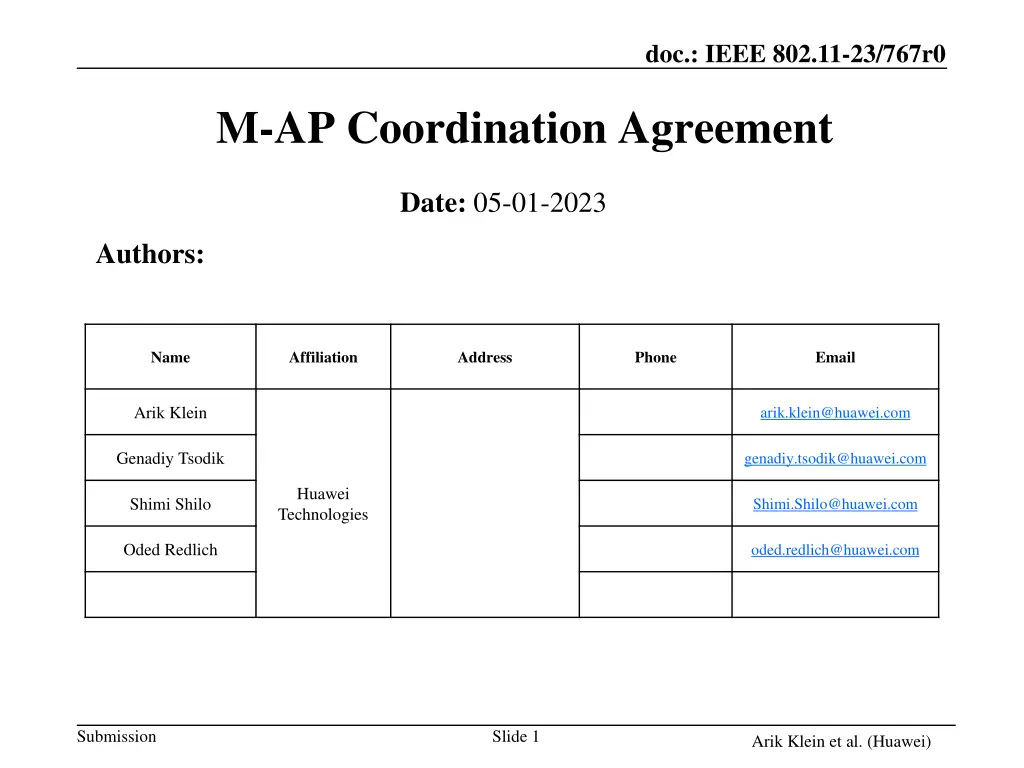
Enhancing Wireless Efficiency Through Multi-AP Coordination
Explore the benefits and principles associated with Multi-AP coordination in the context of IEEE 802.11-23/767r0. This document discusses the potential efficiency gains, reduced interference, and improved reliability that can result from coordinated transmission among multiple APs, providing insights into the evolving landscape of wireless networks.
Uploaded on | 1 Views
Download Presentation

Please find below an Image/Link to download the presentation.
The content on the website is provided AS IS for your information and personal use only. It may not be sold, licensed, or shared on other websites without obtaining consent from the author. If you encounter any issues during the download, it is possible that the publisher has removed the file from their server.
You are allowed to download the files provided on this website for personal or commercial use, subject to the condition that they are used lawfully. All files are the property of their respective owners.
The content on the website is provided AS IS for your information and personal use only. It may not be sold, licensed, or shared on other websites without obtaining consent from the author.
E N D
Presentation Transcript
doc.: IEEE 802.11-23/767r0 M-AP Coordination Agreement Date: 05-01-2023 Authors: Name Affiliation Address Phone Email Arik Klein arik.klein@huawei.com Genadiy Tsodik genadiy.tsodik@huawei.com Huawei Technologies Shimi Shilo Shimi.Shilo@huawei.com Oded Redlich oded.redlich@huawei.com Submission Slide 1 Arik Klein et al. (Huawei)
doc.: IEEE 802.11-23/767r0 Introduction 802.11be discussed Multi-AP coordination as a set of features that will yield additional efficiency gain and increased throughput when multiple OBSS share resources for a coordinated transmission There were several high-level discussions and analyses of various M-AP coordination schemes; however, the main development phase was not carried out within the scope of 802.11be Preliminary discussions in the UHR SG show high interest in this topic In this contribution we want to share our thoughts on the benefits that M-AP coordination should provide (regardless of the coordination scheme) and the principles that lead to an efficient coordinated M-AP transmission in UHR and beyond Submission Slide 2 Arik Klein et al. (Huawei)
doc.: IEEE 802.11-23/767r0 Short Recap In [1] and [2] TGbe agreed on the following two main roles for APs that participate in a coordination [3]: Sharing AP the TXOP holder that shares its resources with other APs Shared APs all the APs allocated with resources for coordinated transmission by the Sharing AP The roles above are dynamic: A single AP is designated as a Sharing AP in a TXOP it obtains and can be designated as a Shared AP in a TXOP obtained by other APs There are several coordination schemes discussed and considered as candidate schemes: Co-TDMA ,Co-OFDMA, Co-SR, Co-BF, JT and Co-UL MU-MIMO [4], [7] [9] In most of the discussions it was assumed that all the coordinated transmissions are triggered by the Sharing AP Some contributions also discussed the overhead required to manage the coordinated transmissions Submission Slide 3 Arik Klein et al. (Huawei)
doc.: IEEE 802.11-23/767r0 Benefits of M-AP Coordination The following benefits are expected as a result of Multi-AP coordination: More efficient use of resources when the AP obtains the TXOP, it proposes to share its resources with other (OBSS) APs that have not obtained the TXOP; this yields more opportunities for every AP to transmit or trigger a transmission within its BSS. Lower OBSS Interference coordinating the resources (e.g. time, frequency, spatial) between APs leads to reduced interference in each of the involved OBSSs and therefore improves the reliability Handling latency-bounded traffic since each BSS gains access to the WM more often, we can address dynamic latency-bounded traffic patterns. From the perspective of an individual AP, there is motivation to coordinate with OBSS APs in order to achieve the benefits listed above Submission Slide 4 Arik Klein et al. (Huawei)
doc.: IEEE 802.11-23/767r0 Schematics for M-AP coordinated transmissions No Coordinated transmissions Co-TDMA TXOP Holder AP3 TXOP Holder AP1 TXOP Holder AP4 TXOP Holder AP2 Freq. TXOP Holder AP5 TXOP Holder AP6 Co-SR TXOP Holder AP3 TXOP Holder AP1 TXOP Holder AP4 TXOP Holder AP2 Freq. TXOP Holder AP5 TXOP Holder AP6 Notes: AP5 and AP6 are not taking part in the coordination We can see that it is in the best interest of an AP to cooperate For simplicity, the duration of TXOP holder remains unchanged in all diagrams. Submission Slide 5 Arik Klein et al. (Huawei)
doc.: IEEE 802.11-23/767r0 (Reciprocal) Resource Sharing Guarantee In the context of a single TXOP, the M-AP coordination gains are realized by the shared APs when they use the resources shared with them by the sharing AP (in practice, the sharing AP is giving up some of its resources) An AP would agree to become a sharing AP and give up part of the resources in the TXOP it obtains only if there is a guarantee by other APs - that they will share some of their resources with it when they will obtain a TXOP A key factor here is that an AP knows that if it shares its resources (acts as a Sharing AP) with other APs, then these APs will share resources with it later on (so it will become a Shared AP) This key factor might be achieved if some kind of mutual agreement between APs is implemented if you get some resources now, you will also share your resources in the future Submission Slide 6 Arik Klein et al. (Huawei)
doc.: IEEE 802.11-23/767r0 M-AP Coordination Agreement A M-AP coordination agreement is established between all the APs that will participate inthe coordinated transmission. An AP enters into an agreement with an intent to take part in the coordinated transmission. Once the agreement is established, each AP guarantees to share its resources with other APs that are part of the agreement - when it obtains the TXOP (i.e. when it becomes the sharing AP) This way, each AP that is a member of a M-AP coordination agreement is guaranteed that resources will be shared with it in TXOPs obtained by OBSS APs (that are members of this agreement). Submission Slide 7 Arik Klein et al. (Huawei)
doc.: IEEE 802.11-23/767r0 Summary This contribution presents the benefits of M-AP coordinated transmission The guarantee that an AP can be a Shared AP during TXOPs obtained by an OBSS AP is a key motivation for the AP to share its resources when it obtains the TXOP (act as a Sharing AP) We present a M-AP coordination agreement as a pre-requisite for a M-AP coordinated transmission Submission Slide 8 Arik Klein et al. (Huawei)
doc.: IEEE 802.11-23/767r0 References [1] 11-20-0566-99-00be-compendium-of-straw-polls-and-potential-changes- to-the-specification-framework-document [2] 11-20-1935-66-00be-compendium-of-straw-polls-and-potential-changes- to-the-specification-framework-document-part-2 [3] 11-20-1895-02-00be-setup-for-multi-ap-coordination [4] 11-20-0560-00-00be-multi-ap-configuration-and-resource-allocation [5] 11-19-1931-02-00be-multi-ap-group-formation-follow-up [6] 11-19-1582-02-00be-coordinated-ap-time-and-frequency-sharing-in-a- transmit-opportunity-in-11be [7] 11-19-1919-03-00be-coordinated-ofdma [8] 11-20-0548-02-00be-discussion-on-coordinated-ul-mu-mimo [9] 11-22-1895-00-00uhr-thoughts_on_map_assumptions [10] 11-23-0293-00-00uhr-Follow-up on TWT-based Multi-AP Coordination Submission Slide 9 Arik Klein et al. (Huawei)



